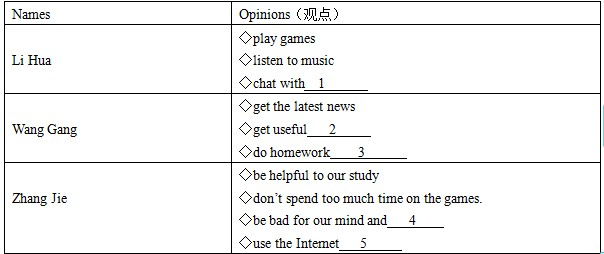1.How many kinds of hobbies that Americans have are mentioned in this article?
A.Four.
B.Five.
C.Six.
D.Seven.
B.Five.
C.Six.
D.Seven.
2.What is the first hobby for Americans?
A.Watching TV.
B.Going to the cinema.
C.Doing some sports.
D.Reading.
B.Going to the cinema.
C.Doing some sports.
D.Reading.
3.Where do Englishmen like to go in their spare time?
A.Garden.
B.Flea market.
C.Library.
D.Cinema.
B.Flea market.
C.Library.
D.Cinema.
4.The people in ________ like reading.
A.Russian and German
B.Russia and Germany
C.America and England
D.England and German
B.Russia and Germany
C.America and England
D.England and German
5.The people in ________ like drinking tea.
A.America
B.England
C.Russia
D.Germany
B.England
C.Russia
D.Germany
